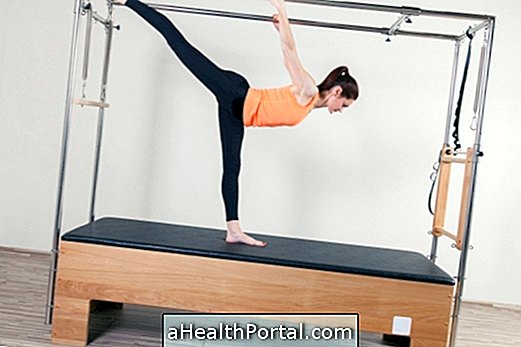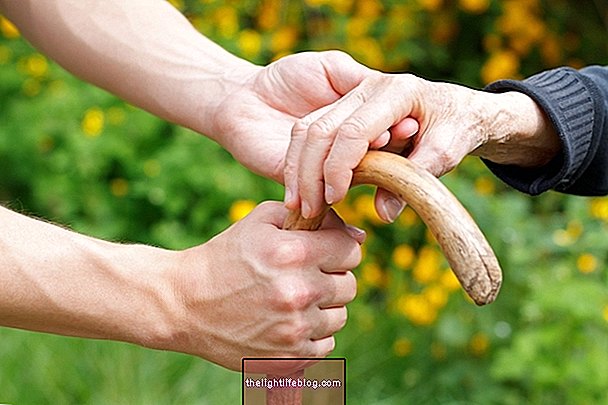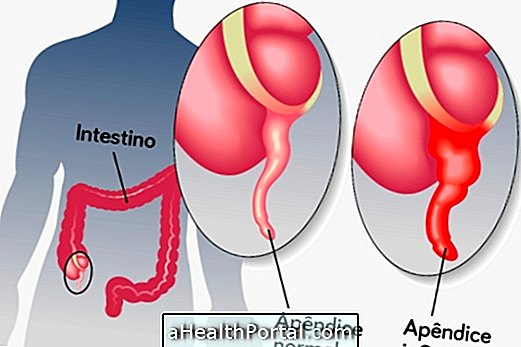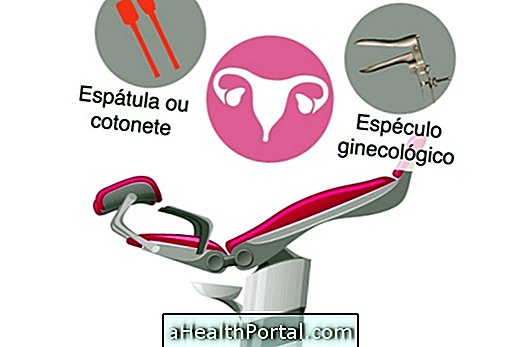Stretching to relieve tendonitis pain should be done regularly, and it is not necessary to exert too much force, so as not to make the problem worse, but if you experience severe pain or tingling during stretching, it is advisable to consult a physiotherapist or an orthopedist.
These stretches relieve tendon inflammation, thereby reducing localized pain, burning sensation, lack of muscle strength or swelling common in tendonitis.
Arm Stretches
For those with tendinitis in the hand, wrist or elbow, some of the stretches indicated to relieve pain and stiffness caused by tendinitis are:
Stretching 1
Begin by stretching your arm forward, parallel to the floor and with the palm of your hand out, and turn your arm so that your hand is facing down. Then to stretch with the other hand you should pull your fingers back, not forgetting the thumb, to feel the inside of the arm stretching.
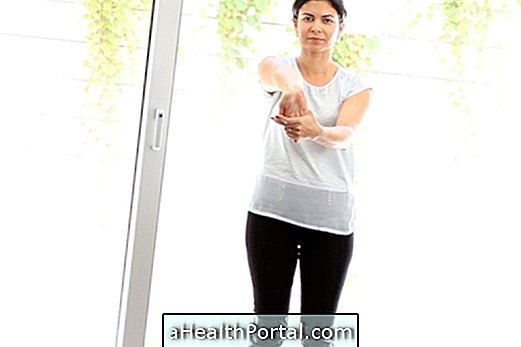
Another way to do this stretching is with the arm stretched forward and with the palm of the hand out, but this time with the hand pointing upwards.
This stretching should be done for 30 seconds and can be repeated 2 to 3 times a day.
Stretching 2
Stretch the arm forward so that the palm of your hand is facing inwards and your hand is facing down. Then, to perform the stretching, pull the fingers down and in with the other hand, in order to stretch and stretch the outside of the arm.

Stretching 3
Stand with your arms behind your back, turn your palms out and cross your fingers. Then stretch by stretching and elbowing (as long as you can) for 30 seconds at a time.

Stretching 4
Standing with your arms outstretched, turn your palms out and cross the fingers of both hands. Then extend and straighten your arms and elbows, letting them stretch for 30 seconds.

Some of these stretches are also beneficial for those suffering with tendonitis in the shoulder, especially the stretches 3 and 4 that lengthen this region.
Stretches for the Hip and Knees
For those who have tendonitis in the hip or knees, some stretches indicated to facilitate movement and relieve pain and stiffness include:
Stretching 5
Stand your feet apart so that they are aligned with the shoulders and then lengthen by bending the body forward so that you touch with your hands on the floor, always keeping your knees straight.

Stretching 6
While standing, position your feet so that they are aligned with the shoulders and then, for stretching, bend your body forward and always with your knees straight, tilt your body to the left side, so that you can grasp the left foot.

Stretching 7
Again standing, move your feet so that they are aligned with the shoulders and then to stretch bend the body forward and always keeping your knees straight tilt the body to the right, so as to grab the right foot.

When to Do Stretching
These stretches should be done early in the morning or before and after physical activity, as they improve muscle flexibility and decrease stiffness, also helping to alleviate pain.
Tendonitis can arise in different regions of the body, but are more common in the hands, ankle, shoulder, hip, wrist, elbow or knees. To treat and cure tendinitis, it may be necessary to take anti-inflammatory and analgesic remedies, and it is indicated to perform physiotherapy and regular stretches at home, which attenuate the natural pain and stiffness of tendinitis. See other tips on what you can do and what you can eat to stop tendinitis by watching this video:



